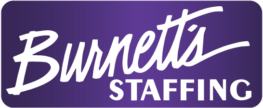By Michael Kelsheimer on December 10th, 2010 Posted in Handbook Articles
Who, What, Why . . .
Who does it apply to: Every employer, regardless of whether employees access the internet at work.
What is it: Blogging, use of sites like Facebook, Flickr, MySpace, Twitter, Digg, LinkedIn, and the like. Virtually every person in the workforce has some access to a computer and likely uses one of the reported 250 million Facebook accounts or the estimated 185 million MySpace pages. These accounts are used to share personal information and sometimes information about work or co-workers which employers would prefer to keep private. If you don’t think your employees are using it, think again.
How does it affect me: Employers have always been concerned about how their employees act at work and when on their personal time. Most employers have maintained at least oral policies about how employees should act and dress while at work. Some have maintained policies about how employees act when on personal time. But what used to be shared among friends over a beer on Friday night has become an entry on the employee’s Facebook or MySpace page where thoughts are expressed in writing and open for virtually the whole world to see.
How can I tell my employees what to do in their off time: This is America and we do protect the freedom of speech, but working for your business is a privilege. If an employee is unwilling to be careful about how they act outside of the workplace, they can do so, but not if they want to work for you. You can fire employees who do not agree to adhere to your conduct standards in or out of the workplace.
Common Situations:
Personal Blogging: An employee who acts as a pilot for a company expresses their personal observations about safety issues with their employer’s airline, or that of another airline (who employer is in negotiations to purchase) based on information learned at work. In the first instance, the employer has just become open to investigation by the FAA. In the second, a prospecting journalist might find the information and use it to write an article about concerns by employer over the safety of the airline it is trying to purchase.
Personal MySpace Use: Infighting among two feuding employees that the employer is not aware of has lead to racially or sexually charged comments being posted. The information is collected and used by the victim to file a discrimination lawsuit against the employer.
Unsupervised Company Blogging: An employee who is an architect expresses safety concerns on the use of a particular type of material in specific building applications. The employee feels he is doing a service to the company by increasing its visibility to the public as safe operator. Unfortunately, the employee is unaware that company formerly advocated the use of the material and its customers now have a potential lawsuit based on the company’s change in viewpoint.
Personal Twitter Use: A supervisor about to board a plane to travel to Phoenix where she must terminate several employees, bides her time by “twittering” that she is sad because she is about to fly Phoenix and let several employees go. Some of her “followers” on Twitter unfortunately are the employees in Phoenix who will be let go. With the cat out of the bag early, one of the employees deletes hundreds of files from the employer’s servers before even meeting with the supervisor.
Use of YouTube: Two employees of a franchise pizza eatery decide to do extremely despicable things with some of the food before baking it into pizzas which will be sent out to customers. For their later personal amusement the employees make a video of the whole act and, on the spur of the moment, post it on YouTube so their friends can view it and laugh along.
Unsupervised Use of LinkedIn: An employee excited about being promoted to work on a new project for employer on a cutting edge technology immediately updates his profile on LinkedIn, which the employer recommended all employees keep for use with business contacts. A competitor discovers the promotion and because the employee was so eager to explain his new job, learns of the employer’s new technology and begins work in the same area.
Use of Company Email for Personal Topics: An employee receives a humorous, but off-color joke or picture and uses company email to forward it to friends. The email is now a reflection on your business because the employee sent it from their work email account. Emails like these, especially those including video, also take up valuable space on company servers which might otherwise be used for business purposes.
What should I do:
With the millions of permutations on the hypothetical situations expressed above which all end badly for an employer, it would be valuable to take steps against such conduct before it happens:
Good: Orally inform your employees of the potential issues which may arise from their conduct in the use of social networking sites. Make sure they understand the potential implications and the possible consequences for their employment at the company. Ask employees to use free accounts from gmail, hotmail, or other similar sites for personal business.
Better: In addition to the personal email suggestion above, implement a written policy regarding the use of social networking sites and have each employee sign it.
Implement a written policy regarding the use of social networking sites, appoint a supervisor to oversee the use of social networking for work purposes to keep employees on the right track, and randomly check the internet to learn what employees have been up to.
https://www.texasemployerhandbook.com/2010/12/social-networking/
